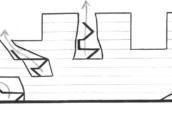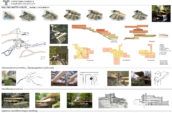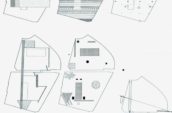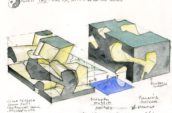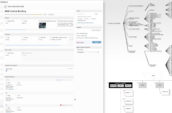Program Equivalency Method or Taxonomic Diagramming
In general, taxonomy is a hierarchical structure for the classification or organization of data, historically used by biologists to classify plants or animals according to a set of natural relationships.
In content management and information architecture, taxonomies are typically leveraged as a tool for organizing content. Strictly, a taxonomy is just the hierarchical structure of the content, but with most complex content ecosystems, the term also often refers to metadata and controlled vocabularies.
“Metadata” describes an asset and provides a meaningful set of attributes that can be used to further classify or consume content. A “controlled vocabulary” is a restricted list of words or terms used for indexing or categorizing, often with cross-references pointing from a non-preferred term to the preferred term. To make it more fuzzy, the taxonomy (hierarchical structure) is also metadata.
Class Assignment:
Students should combine programming, diagramming and drawing and painting imagery (digital or or by hand) along with conceptualized mapping techniques using created imagery to completely “replace” the program with visualized abstracted “morphogenic” symbols.
This will be a fundamental part of the October 13th Presentation.
Read More on Our Blog
Transactionalism
In architecture, we are concerned with all the definitions of “transaction” above. I am also interested in the way Transactionalism ties to “translation” in architecture.What is a "Mentor"?
Mentor is defined as “an experienced and trusted advisor” (Oxford English Dictionary). For this essay I will further clarify that one need not have ever met their “mentor”. It widens the spectrum dramatically.Mimetic Architecture
The Russian painter and sculptor Kazimir Malevich may be one of the first artist philosophers to contemplate a “cleansed” architectural palette.
Transactionalism
In architecture, we are concerned with all the definitions of “transaction” above. I am also interested in the way Transactionalism ties to “translation” in architecture.What is a "Mentor"?
Mentor is defined as “an experienced and trusted advisor” (Oxford English Dictionary). For this essay I will further clarify that one need not have ever met their “mentor”. It widens the spectrum dramatically.Mimetic Architecture
The Russian painter and sculptor Kazimir Malevich may be one of the first artist philosophers to contemplate a “cleansed” architectural palette.
David Kesler is a Multi-Disciplinary Architectural Firm in San Francisco
David Kesler is a multi-disciplinary firm specializing in architectural services for residential, commercial, and institutional clients.

